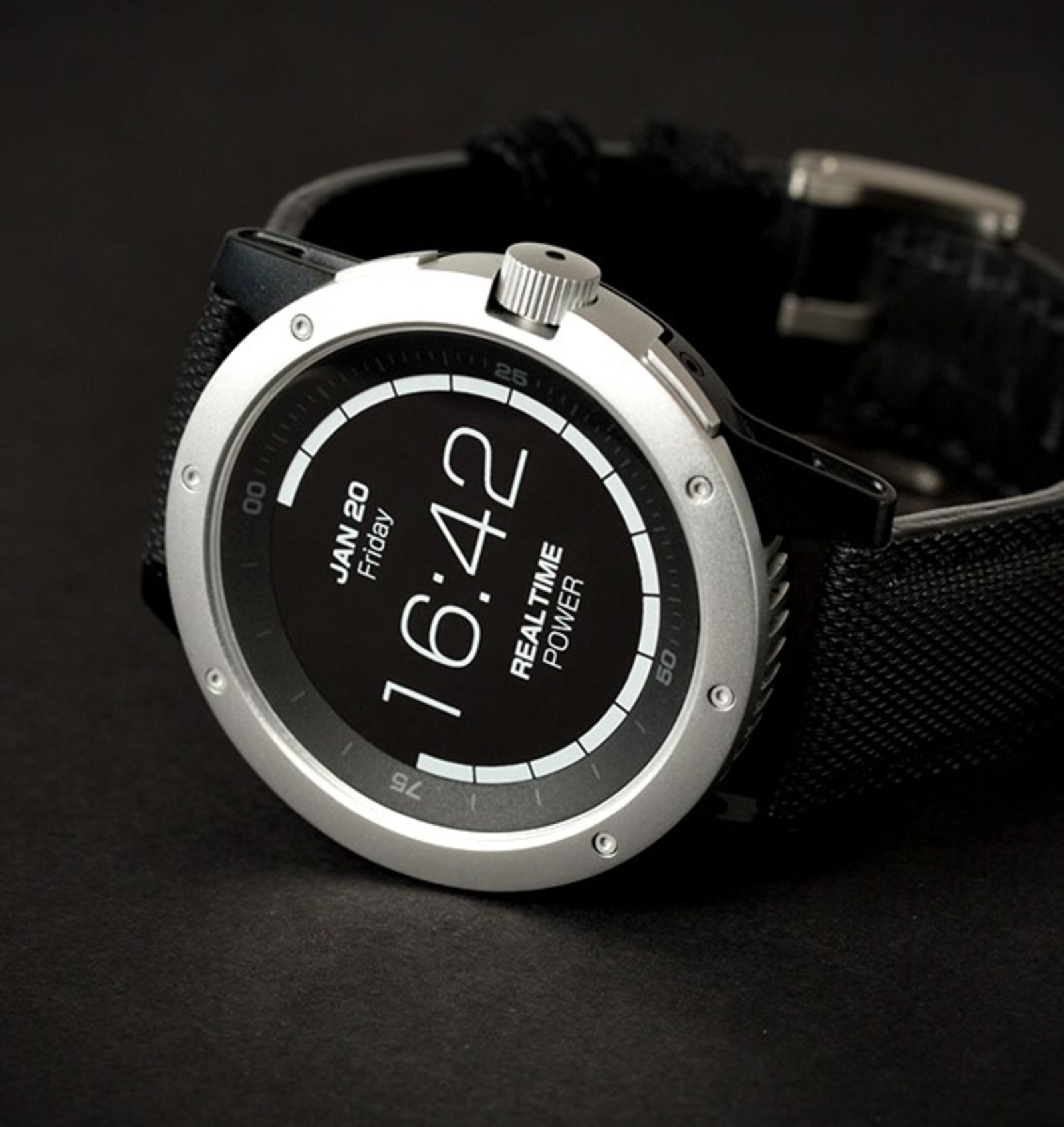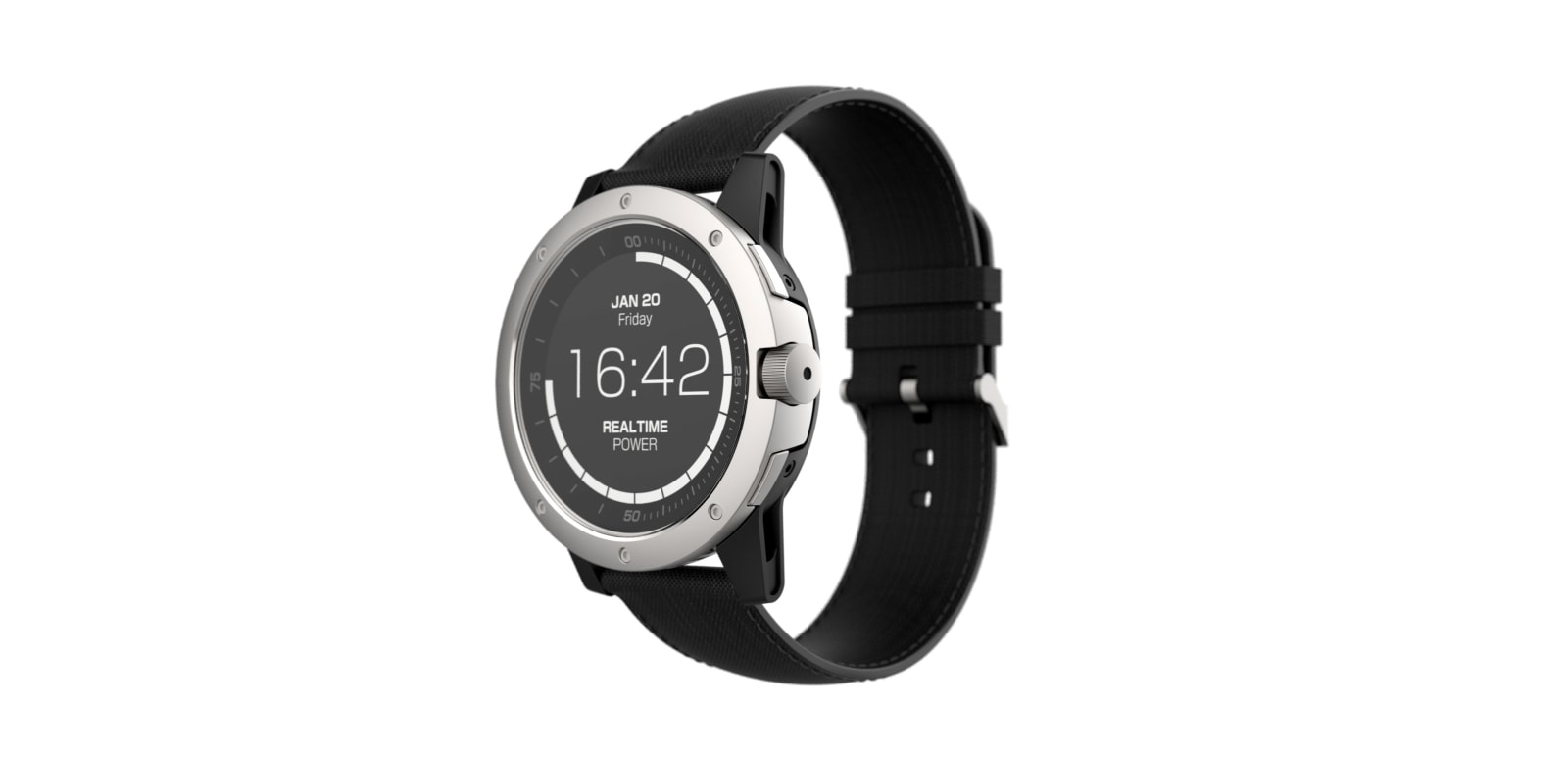The PowerWatch is a body heat-powered smartwatch that does very little
One of the biggest problems with smartwatches is avoiding a dead battery. Whether it’s forgetting to plug them in in time or having to fiddle with the unwieldy magnetic disk chargers, keeping a wearable juiced up is not as convenient as it should be. With that in mind, startup Matrix Industries devised a way to harness our body heat to power smartwatches, and its technology is making its debut in the PowerWatch. I had a chance to try out an early prototype of the device, and though it did indeed work, it only offered very basic functions.
Body-heat as an energy resource isn’t new, not even in watches (remember the Seiko Thermic?). But it doesn’t take much energy to simply move a second hand around, whereas much more is needed to run a processor. The PowerWatch will be the first wearable to be powered entirely by warmth, thanks to what the company says is the world’s lowest-power-consuming microprocessor, made by a third-party manufacturer called Ambiq Micro. Earlier processors were too power-hungry to be effective, says Akram Boukai, founder of Matrix Industries. Without the processor, the PowerWatch would not have been possible, he says, even though thermal technology has been in existence for far longer.
It may be power-efficient, but that processor doesn’t appear to do very much. The PowerWatch is only capable of displaying the time, tracking your steps and sleep quality, setting timers and stopwatches and monitoring the amount of energy you’re generating. That last bit is displayed as a power meter made up of blocks circling the watch face that gets fuller as your body temperature increases, say when you’re exercising, creating a larger difference between your skin’s surface temperature and the surrounding air.

The power you produce also acts as a more accurate measure of your calories burned, because a calorie is defined as a unit of heat energy anyway. The watch will send this information to your phone via Bluetooth, displaying it in circular charts so you can see how much energy (in milliamp hours) you’re creating and compare it to data from previous days. You’ll also be able to set goals for distance and steps like you can in most fitness apps.
Those are all the functions this first-gen wearable is capable of, so don’t expect this to be a truly smart watch that can receive your phone’s notifications on your wrist. The company did say these features could be added in future iterations of the product, though.

I placed the chunky PowerWatch prototype on my wrist during a recent demo and saw its display turn on after a second or two of contact with my skin. A four-bar power meter showed up on the screen, with all blocks filled up. Boukai told me that just one bar needs to be filled to provide enough energy for the watch’s basic functions. Anything generated beyond that goes toward charging the device’s 200mAh battery, which Boukai said can last two years when idle. Meaning: The device goes to sleep when you remove it but continues to keep track of the time and store your collected data.
A fully functional prototype wasn’t available at the time of my demo, but the final version of the watch will sport a round, 1.2-inch black-and-white display and 18mm or 20mm straps. It’s available for preorder on Indiegogo for $99, with an expected arrival of July 2017, but the price will rise to $160 when it eventually ships. While the PowerWatch appears to be a very basic, proof-of-concept device at the moment, Matrix Industries’ plans for the future are far more interesting. It intends to make hearing aids and wireless earbuds that can be powered by body heat as well, and is already working on a slew of other applications for its more efficient and reliable means of generating energy.
(70)















